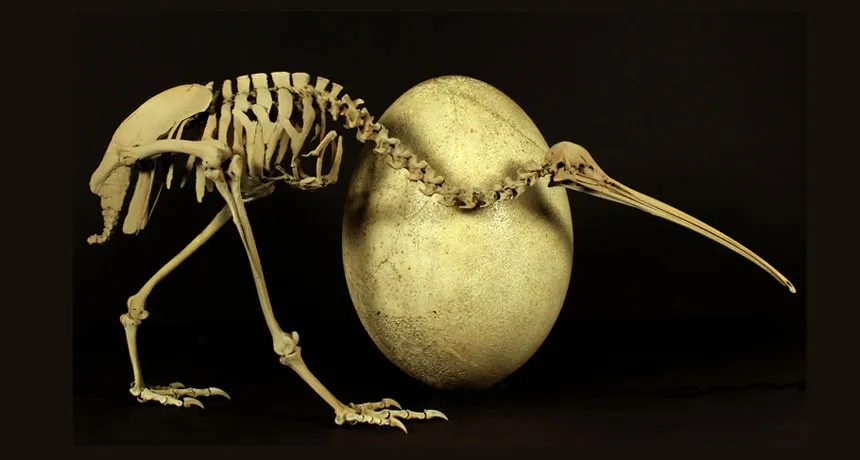Flightless birds’ history upset by ancient DNA
Ancestors of kiwis and elephant birds didn’t just drift with the continents

RELATIVELY ODD Ancient DNA has revealed an unusual pair of closest relatives: New Zealand’s flightless, roughly chicken-sized kiwi species (skeleton of adult Apteryx australis shown) and Madagascar’s huge elephant bird (egg of Aepyornis maximus shown).
Kyle Davis and Paul Scofield/Canterbury Museum